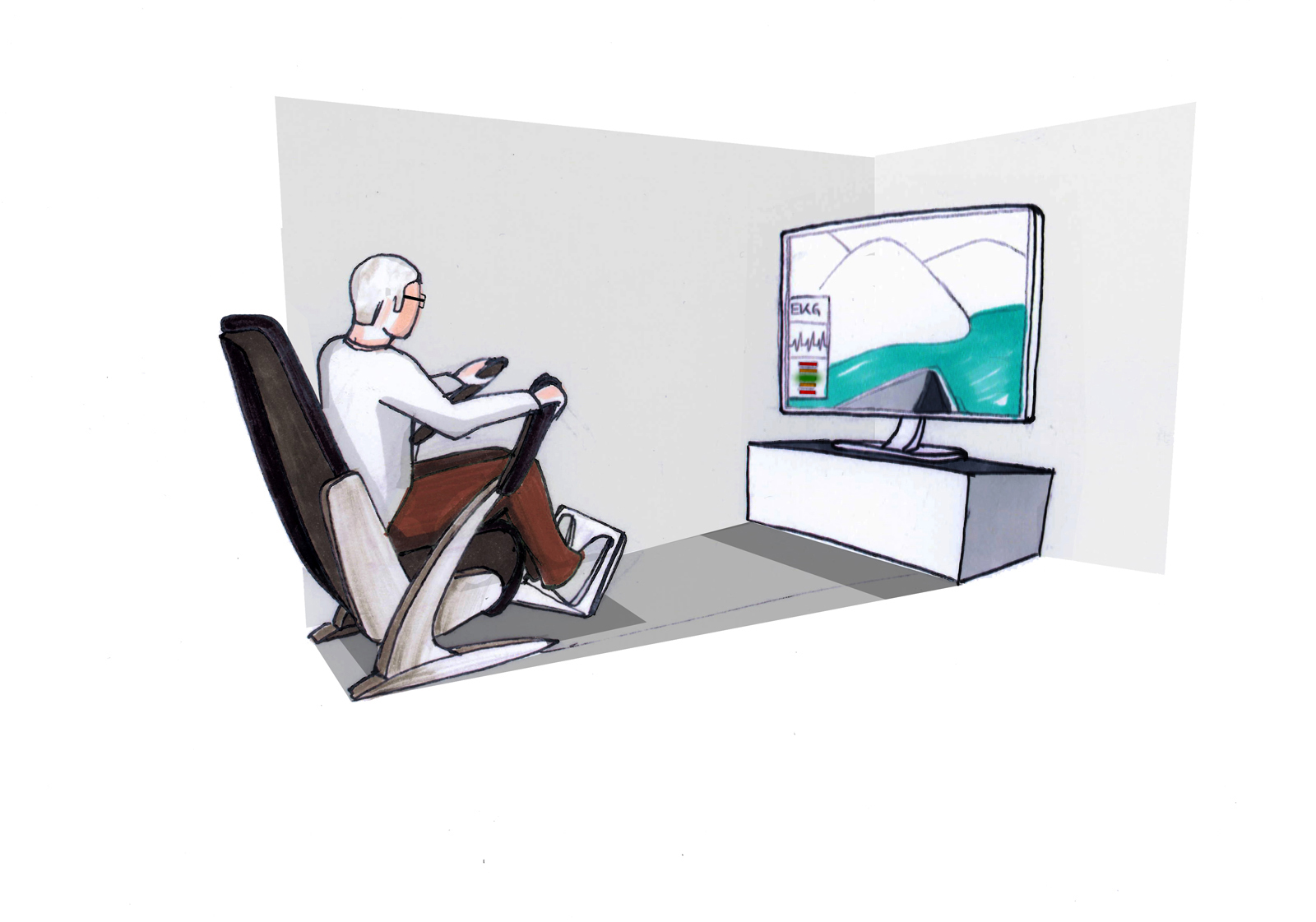CeBIT 2013
The armchair as a fitness trainer
Each of us would like to pursue our personal hobbies and interests into old age. However, this depends on us staying fit and healthy. Researchers are now presenting an armchair that brings the gym right into your living room at the push of a button.
For years the trends have been clear: not only are we getting older all the time, but we are also increasingly left to take care of ourselves in our old age. This is why researchers are already working on technologies that will assist us in everyday situations later in life. One of these technologies is will be presented by the Fraunhofer Institute for Integrated Circuits IIS in Erlangen (Germany) at the CeBIT trade fair in Hanover, March 5-9, 2013 (Hall 9, stand E08): an intelligent armchair we can not only comfortably sink into in front of the television but one that also motivates us to keep ourselves healthy and fit.
On the outside, GEWOS looks like a conventional armchair. Even when you sit down you don‘t notice any difference. But first glances can be deceiving. A glimpse inside the armchair reveals sensors, circuit boards and all kinds of wiring. The microsystem technology built into the seat cushions, backrest and armrest constantly measures the state of health of the seated person. ”GEWOS measures the key bodily functions and determines the correct sitting posture. If the acquired values deviate from specifications, the system shows the user how he or she can practice improving endurance or sitting in a healthier position,“ explains Sven Feilner of the Image Processing and Medical Technology Department at IIS.
A very different way to watch TV
A tablet PC applied to the armchair transmits the data to the TV via Bluetooth and WLAN. Feilner describes the system: ”At a glance the user can view trends in pulse rate, blood oxygen saturation, blood pressure or weight over a certain period of time. A virtual health assistant uses the recorded data to come up with exercise plans tailored to the user and updates these plans based on the progress made“. If the values fall outside a prescribed range the health assistant may recommend more exercise. Then, the armchair is transformed into a rowing machine of the kind seen in fitness studios. The armrests become the oars, and a support for the rower‘s feet pops out below the seat. Individual exercises are easy to call up through the television. ”Here too the sensors record all of the values and the health assistant lets the user know if any exercises are not being executed correctly,“ Feilner continues.
The armchair has already passed its first test with flying colors. Last year, at the AAL Conference (Ambient Assisted Living) 2012, 100 senior citizens tested GEWOS and ranked it in first place among 14 different assistance products. Feilner looks ahead to the future: ”The next steps involve a comprehensive evaluation for the finishing touches. We‘re very confident that we‘ll be able to market the armchair together with our partners in the foreseeable future“. The scientists in Erlangen want to use people‘s natural play instincts to help them add cognitive games to the system‘s capabilities. Senior citizens should not just row against imaginary competitors; memory games should also encourage them to participate. By making a mental note of individual segments of the armchair, for instance, and then placing weight on them using the corresponding part of their body. Visitors to the Fraunhofer stand at CeBIT in March will have an opportunity to test the armchair for themselves in a live setting.
Six partners, one goal
The project, dubbed ”GEWOS“ (an abbreviation for the German ”Gesund wohnen mit Stil“ [Healthy Living in Style]), is funded by the German Federal Ministry of Education and Research (BMBF) and is being carried out by six partners in business and research in addition to IIS. The goal is to create an assistance system that is easy to operate and will be accepted by senior citizens. In addition to the exercise armchair, GEWOS also includes a web platform as a central interface for information management. The platform can be used to call up health-relevant data and to integrate physicians and health experts. ”Senior citizens should be able to get around independently in their own four walls as long as possible. For that to succeed they have to stay healthy. The exercise armchair gives them an easy and motivating way to stay fit,“ Feilner concludes.
